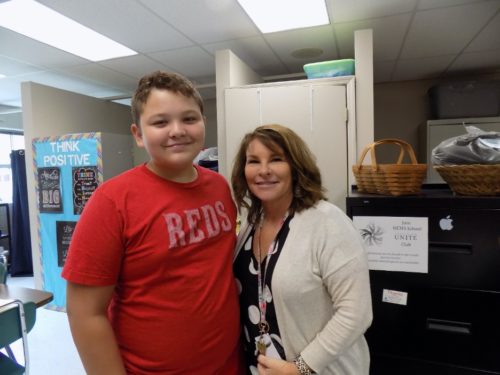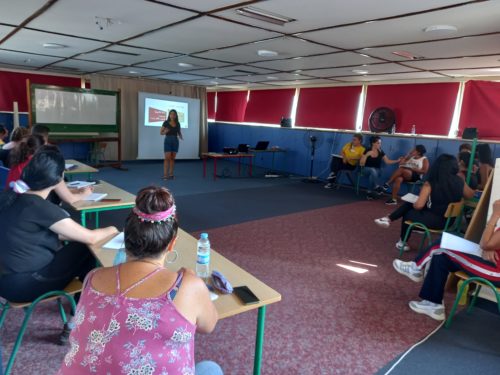We are thrilled to announce our new partnership with Banter™ by Piercing Pagoda®. Starting this upcoming Giving Tuesday, $1 will be donated to Children Incorporated from any item purchased from Banter by Piercing Pagoda’s Kids Collection through December 19th, up to $50,000.
All proceeds will go to our Hope In Action Fund which supports children and families in emergency situations, such as natural disasters, extreme hardship due to health challenges, and when families are unable to pay for school activities for their children.
“Using every purchase from our Kids Collection for this partnership only felt right when working with Children Incorporated to support the need of the children they serve, and we can’t wait to continue our partnership in the future.”
“We’re excited to partner with Children Incorporated this Giving Tuesday to help kids on their journeys to becoming the best versions of themselves. When we came across Children Incorporated, we felt an immediate connection based off our brands’ mutual passion for everyone, and in this case children, to have the opportunity to succeed,” says Brandi Guccion, Vice President of Brand Marketing, Banter™ by Piercing Pagoda®.
“Banter™ by Piercing Pagoda® empowers individuals to celebrate who they are and have the confidence to believe in themselves, which is why we felt an instant synergy with Children Incorporated. Using every purchase from our Kids Collection for this partnership only felt right when working with Children Incorporated to support the need of the children they serve, and we can’t wait to continue our partnership in the future.”
About Piercing Pagoda
 Today, Piercing Pagoda®, the rapidly growing, affordable fine jewelry and piercing retailer, announced it’s ushering in a bold new chapter in its 50-year evolution with the testing and introduction of a new master brand name, “Banter™ by Piercing Pagoda®.” This new name reflects the personal relationship the retailer has with both its new and long-held customers, its innovative customer experiences, and its omnichannel growth strategy. “Banter™ by Piercing Pagoda®” has plans to roll out the name to its more than 500 U.S. locations, digital platforms, and social media channels. Already, one-fifth of existing locations are testing the new Banter™ by Piercing Pagoda® name in cities including New York, Chicago, Los Angeles, and Seattle.
Today, Piercing Pagoda®, the rapidly growing, affordable fine jewelry and piercing retailer, announced it’s ushering in a bold new chapter in its 50-year evolution with the testing and introduction of a new master brand name, “Banter™ by Piercing Pagoda®.” This new name reflects the personal relationship the retailer has with both its new and long-held customers, its innovative customer experiences, and its omnichannel growth strategy. “Banter™ by Piercing Pagoda®” has plans to roll out the name to its more than 500 U.S. locations, digital platforms, and social media channels. Already, one-fifth of existing locations are testing the new Banter™ by Piercing Pagoda® name in cities including New York, Chicago, Los Angeles, and Seattle.
“Our new Banter™ by Piercing Pagoda® name is full of energy, invoking the excitement of playful conversation, like the adrenaline of a new piercing or piece of jewelry. Our customers are fiercely individual, creative people who inspire us to reject labels and celebrate our unique identities each day,” said Kecia Caffie, President of Banter™ by Piercing Pagoda®. “Guided by our Inspiring Brilliance strategy, our passionate team draws inspiration directly from our customers to continually evolve our product offerings and our connected commerce experiences so that we’re there for them whenever, wherever and however they choose to shop with us.”
Known by its distinctive gold-script capital letter “B,” Banter™ by Piercing Pagoda® aims to empower more customers to express themselves with chains, charms, necklaces, and earrings that are gender neutral – and safely offers piercing services for the face, nose, and ears. Banter™ by Piercing Pagoda® combines stylish designs and approachable service at affordable price points with tech-enabled stores and warm, modern service.
Banter™ by Piercing Pagoda® is part of Signet Jewelers, the world’s largest retailer of diamond jewelry. Within the Signet portfolio, which features nine jewelry retail brands with distinct value propositions, Banter™ by Piercing Pagoda® caters to the tech-savvy Gen Z and millennial customer, who is passionate about jewelry and fashion – and lets their style tell their story. Banter™ by Piercing Pagoda® takes inspiration directly from its customers to evolve product offerings, underscoring the company’s consumer-inspired strategy based on data-driven insights.






